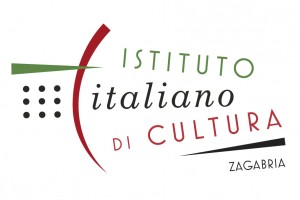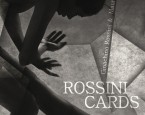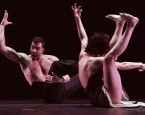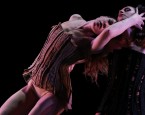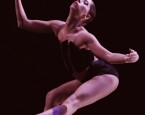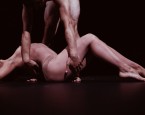
Premiere ROSSINI CARDSGioachino Rossini & Mauro Bigonzetti
Rossini cards is a contemporary ballet performance that has delighted both the critics and the audience throughout Europe and North America. In its core abstract and without a firm dramaturgical framework, it still offers scenes from parallel lives, intriguing turns of events from dramatic into comic situations; unexpected connections that oscillate between eroticism, vanity and irony. By exceptionally skilful joining of the classical dancing technique and Rossini’s baroque music, Bigonzetti (together with his team of authors) has created a masterpiece of modern art that goes beyond the exclusively ballet one. With regard to both the movement and expression, dancers will face the challenge to perform choreographic sequences in the range from the classical, lyric, yearning and profoundly warm up to the comical, sumptuous, sensual, lively, even the furious ones. In short, both for the dancers and the audience this work is a top-grade feast that manifests all the innovativeness and emotionality of the two great maestros, Rossini and Bigonzetti.
Performance sponsors:
https://www.youtube.com/watch?v=ikN-j03-O1c&feature=youtu.be
1) How would you describe your staging of Rossini Cards? Can you remember what it was that had inspired you then?
As many of my works, Rossini Cards was inspired by music itself; this staging especially so due to Rossini’s brilliance in composing, this work’s inner theatrical and expressive power. I was also inspired with its potential for choreographic gesture despite the fact that none of Rossini’s works was written for ballet. Whenever I listen to Rossini’s music I can see the theatre curtain in front of me.
2) Can you tell us something more about the Aterballetto Dance Company you worked on the first Rossini Cards with?
Each work is created for the dance company it was primarily intended for, the one that works on it. Thus it is not easy for me or my associates to adapt the performance to a new company. Also, as most of my assistants were present during the original creating of the performance, they know my work quite well. It is always an interesting challenge to find characters and the right style for each role among new dancers. Furthermore, it is always a pleasure to rediscover your own creations through new interpreters.
3) Why Rossini? How did you choose his compositions for what you wish to inspire in the audience?
How is it that you usually choose music for your performances?
Rossini because of his versatility: he composed for the piano, the orchestra, string instruments, then lyric operas… I have chosen different pieces as I wanted to investigate his immense imagination.
Otherwise, it is music that chooses me! I only follow the inspiration.
4) What is it in your choreography that has for years been so well accepted in countries, in cultures that are so different? It is said that times are changing while the performance of Rossini Cards has been present for almost 15 years on a number of stages, which is not often the case, is it?
It is hard to say. It is probably strong ideas – I’m still referring to music – that can make a deep impression on us. They remain for years, for centuries. We can listen to the same pieces for years and each time be inspired by new imaginations.
5) What would you say of the style of your works?
I cannot give you an answer as I see my works as too heterogeneous and different. I think the audience might be able to find my signature, if there is such.
6) As you have worked with different ballet companies, can you tell us what is it that you always look for in dancers?
Generosity, curiosity and will power. If there are these elements, it is always possible to develop interesting artistic relationships. What I like to find is the quality of uniqueness, so that there are no specific characteristics that I’m looking for when working with dancers, except for their trust and wish to be creating together.
7) After all of your choreographic works, what is your vision in dance, in the performances?
I’m still looking for my vision of ballet and, to be sincere, I don’t think I’ll ever define it. It’s ever so much connected with a certain context and time. In each particular situation or phase of life we create new visions.
Andrea Labik
When Mauro called me asking me to get the Rossini Cards back to form, I was more than happy. I’m quite thrilled to be doing this for the Ballet of the CNT Ivan pl. Zajc, especially so as for a number of years I worked at the Aterballetto with Maša Kolar, while now we meet again in order to create something special with her ensemble.
I danced in Mauro Bigonzetti’s performances for almost ten years and experienced the whole process of his creation, as well as his generosity and passion.
Rossini Cards bears ever so many life aspects, tragic, comic, touching, crazy, etc.
Conveying this piece to the wonderful Rijeka dancers, I understood that apart from the work on details in order to catch the Bigonzetti spirit and style, it was also important to copy the specific, unique and magnificent energy that dancers feel when Mauro is present in the hall, in order to convey it then on the stage, to the audience. It is then that the magic happens.
Béatrice Mille

